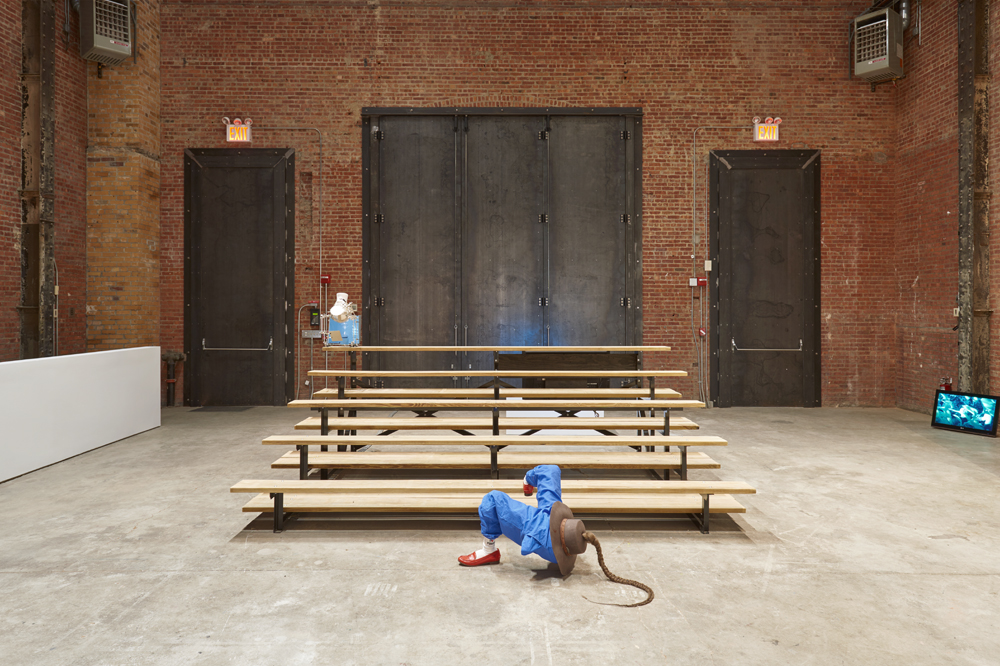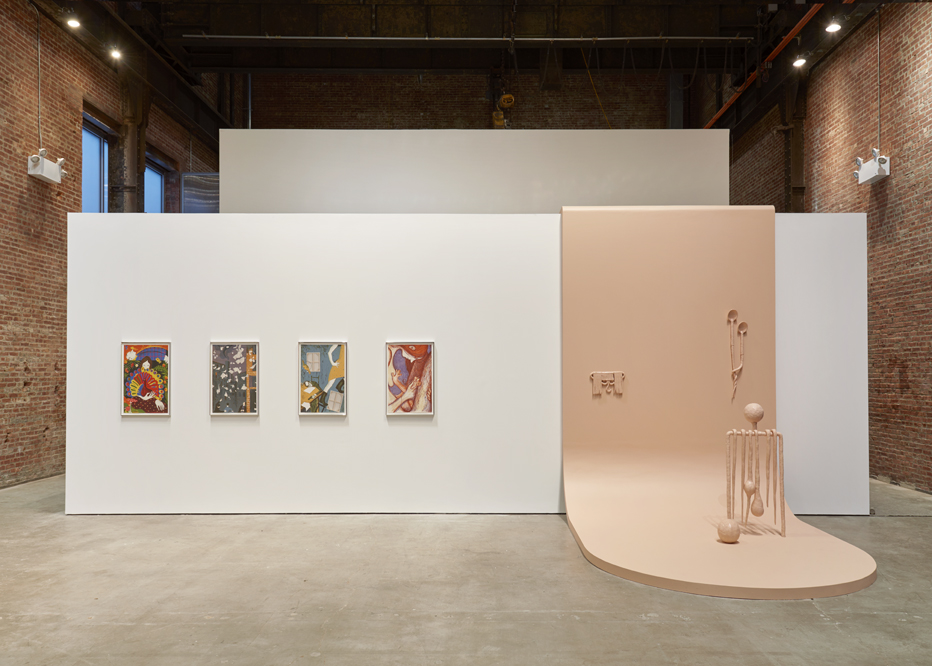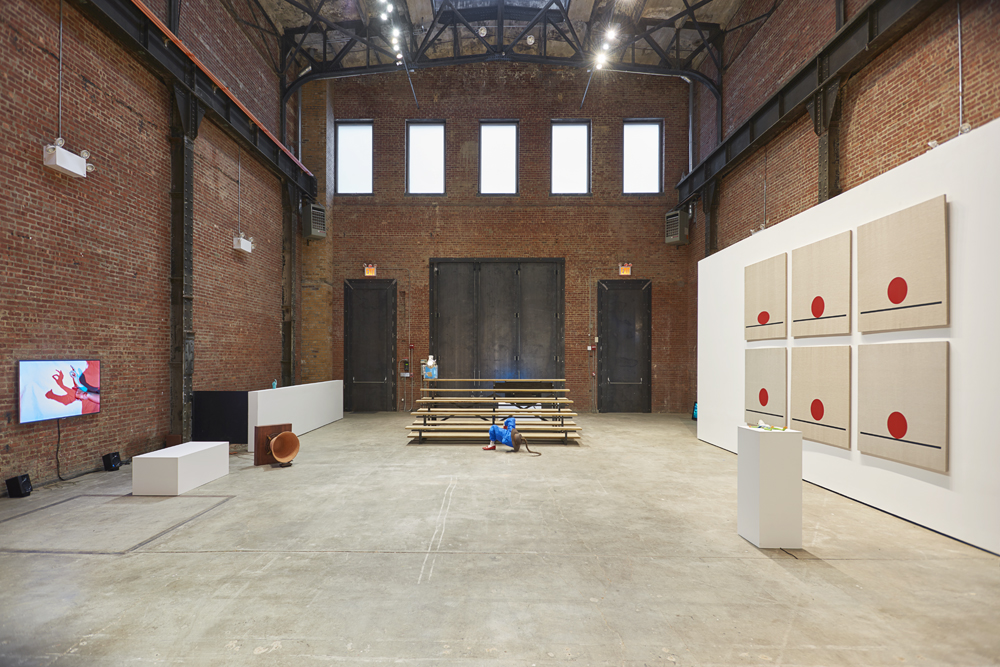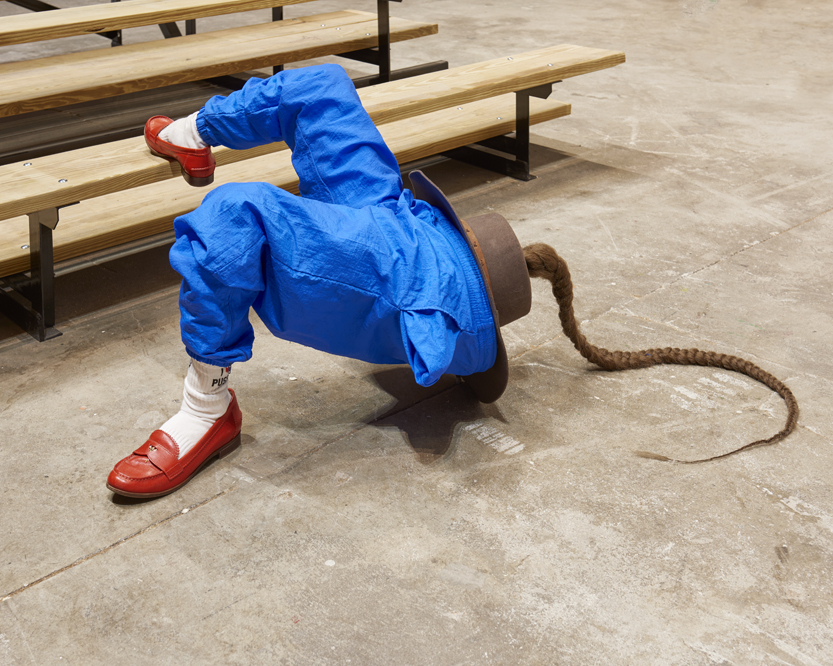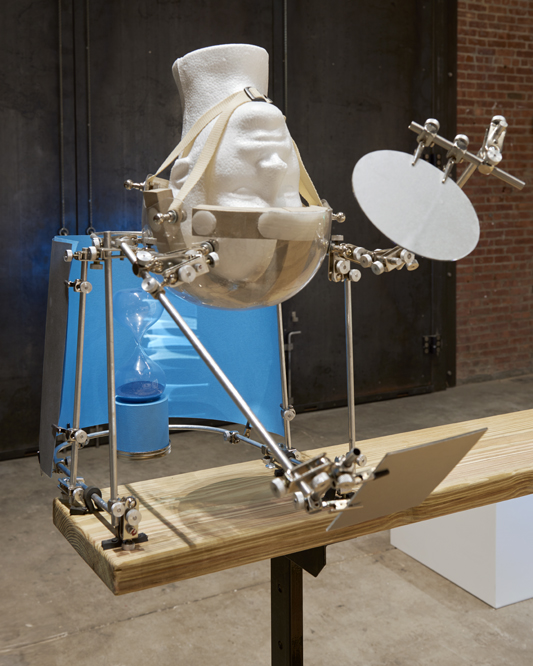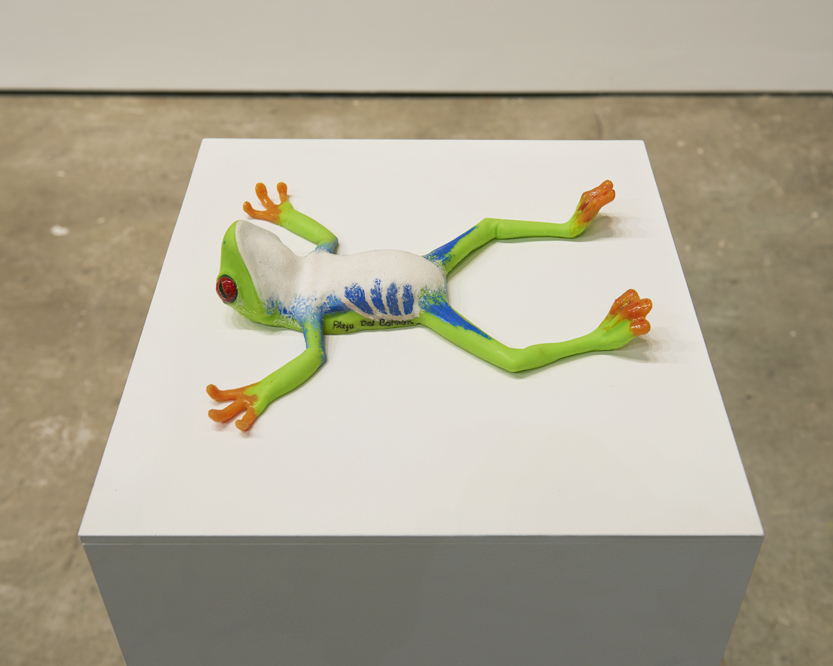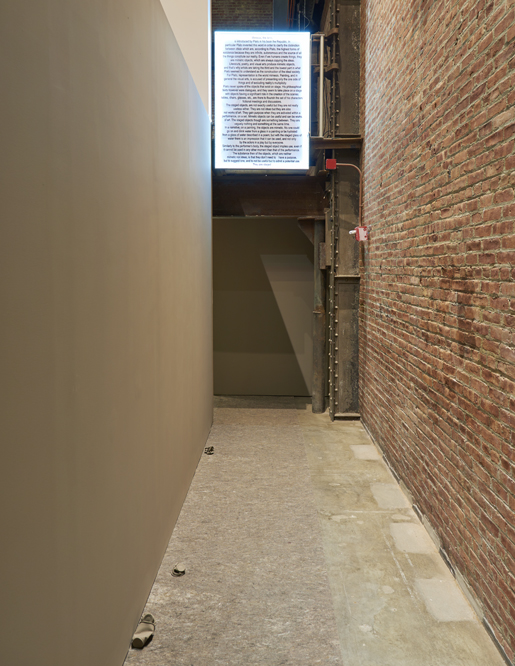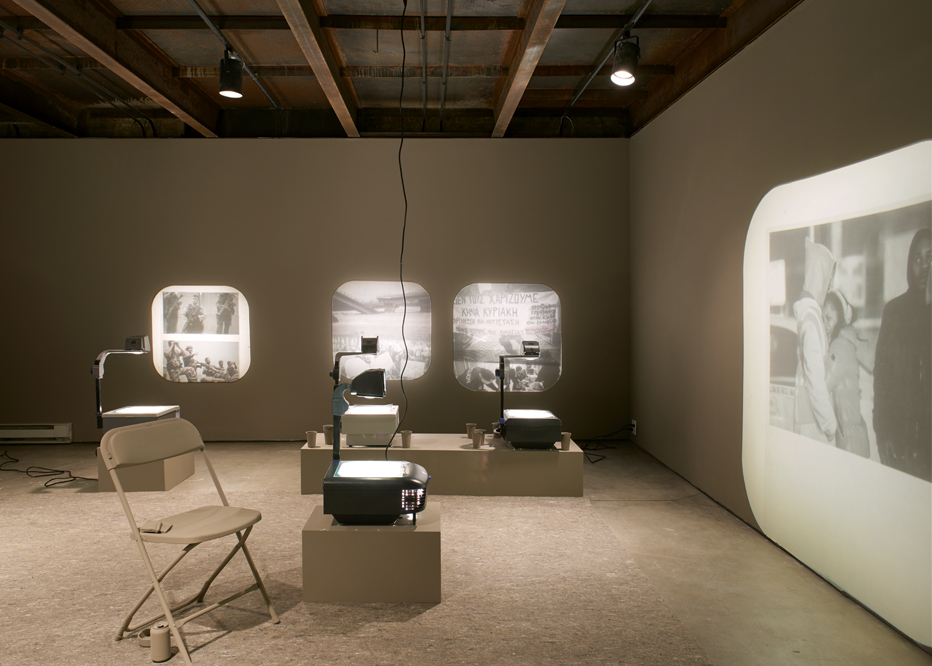What should artists do in a time of crisis? This grave question haunted the avant-garde movements of the early twentieth-century. In the wake of the Russian Revolution, one such group assembled in St. Petersburg under the banner of Eccentrism. A cohort of actors, acrobats, and comedians, the aim of their performances, according to founder Sergei Yutkevich, “was the final destruction of the bourgeois world.” With the benefit of historical distance, there is an apropos absurdity to Eccentrism’s claim. How could a group of circus performers and harlequins deliver the masses from conventions administered by the ruling class? Almost a century later The Eccentrics, a pertinent group show at SculptureCenter, curated by Ruba Katrib, reanimates these Modernist aspirations.
For many of us, today is also a time of crisis. I saw The Eccentrics the day after attending Surviving Total Surveillance, a chilling panel at the Whitney Museum. Laura Poitras, Trevor Paglen, Kate Crawford, and others explored the potential of contemporary art to address the Panopticon of surveillance administered by the NSA. Surviving Total Surveillance thought through the sublime extent to which our lives and communications are quantified and monitored. How, then, does one justify artistic practice when confronted with the datalogical regimes of information control? The work of Paglen and Poitras seems to need less rationalization for its existence in the surveillance state. Through the prism of computation, their art becomes a powerful example of data visualization, reifying the ethereality of the internet and clandestine government operations.
By comparison, how does The Eccentrics, which takes the suspension of disbelief and the circus as points of departure, maintain a convincing sense of relevancy? What does such an ostensibly free-wheeling exhibition offer us now?
The Eccentrics is about this very impasse. The collective works of Sanya Kantarovsky, Adriana Lara, Ieva Misevičiūtė, Eduardo Navarro, Jeanine Oleson, Georgia Sagri, Zhou Tao, and Tori Wrånes mime a longstanding quandary within art: the idea that it must “do” something. In pursuing the meaningful performativity of art and its objects these works eschew any concrete remedies for transcending the desire for relevance. This tension guides viewers through the exhibition. The Eccentrics unfolds like a series of P.T. Barnum’s humbugs: near-miraculous objects (a mermaid’s corpse, a fragment of Noah’s Ark) that induce doubt and wonder. Such a scenario is embodied in Lara’s work. The Non-object (frog) (2016) transfixes viewers with a beguiling situation. A silicone amphibian lies on its back like a pathetic thing, splayed. As if on its deathbed, the frog’s small, white belly (curiously inked with the words “Playa Del Carmen”) rises and falls in perpetual exhaustion. As skeptical viewers, we know this object does not actually feel, nor can it be alive. So, to what end is this object imbued with a simulation of life? And why should we feel empathy for something that cannot feel us?
Versions of these questions arise, morph, and reverberate throughout the exhibition. As we contemplate the impending death of something that never actually lived, Wrånes’s sculpture Double Vision hovers above us. Two wooden gymnastics rings, with no performer to activate them, suddenly begin to sway back and forth, aimlessly. Raising intrigue about how and for what reason, Double Vision ostensibly reads as activation for the sake of activation. Double Vision invokes the specter of a performer, but it and many of the other works in The Eccentrics were integrated or actuated by the artists in a series of performances throughout the duration of the exhibition. On opening night, Wrånes complemented Double Vision by bringing into being the absent performer; a deranged-looking clown zoomed throughout the gallery on a hover-board, playing a wooden flute. The Eccentrics revels in such sophisticated nonsense.
Kantarovsky’s video installation Happy Soul (2015) is the most enrapturing and confounding piece in the exhibition. Invoking the words of curator Ruba Katrib, the sketchy painting of a male nude covering his genitalia “conjures performance anxiety.” The vocals from Smokey Robinson’s “Being with You” (“I don’t care what they think about me, and I don’t care what they say”) kick off Disney-esque animations projected on and around the painting. Giant white-gloved hands stroke the painting’s sides; melancholy men trudge across the bottom of the video plane; a swarm of colorful butterflies condenses and dissipates. If we extend this idea of “performance anxiety,” Happy Soul reads as being about the expectations ascribed to a work of art: it must perform. As if the painting is not enough, the real world must be augmented by the virtual.
The humbugs of The Eccentrics continue on, leading viewers through suggestions of the performative. With the aid of an hourglass and mirrors, Navarro incredulously claims his bespoke helmet, Five minutes ago (2015) permits wearers to watch time flow backward. Misevičiūtė’s Tongue PhD (Hardcover) (2016) is a tongue-shaped stage dotted with flesh-toned props and costumes that lie dormant for a future performance. In her 3-D video, Olsen transforms the making of her ceramic speaker-sculpture into a hypnotic event. Yet before The Eccentrics transports viewers to a world too fantastic, there are moments that keep us entrenched in the immanent. Tao’s video Blue and Red (2014) sources its footage from protests in Bangkok. In a room painted “Taos taupe,” Sagri projects images from Sunday papers, images of Syrian refugees and civil unrest.
Katrib advises us in the exhibition’s catalogue that The Eccentrics invokes the “subtle, wasted traces” of the circus to implore viewers “to react with laughter as well as feelings of apprehension of astonishment.” Feeling is indeed important in this exhibition: laughter, astonishment, and apprehension are catalyzed by art mimicking performativity. The objects here parody the idea of use. Many who read this would agree that art’s relevance and value extend beyond being an instrument of freeportism or a product of ideology. But reifying art’s power and use-value in a surveillance state that values lines of code and those who wield them is a difficult task. Perhaps a crucial step toward not having to justify art through quantifiable means like economic impact and market performance is identifying and critiquing the very idea that art is expected to perform in collusion with the quantified world. Having done that, The Eccentrics moves beyond the turbulent sea of numbers.

